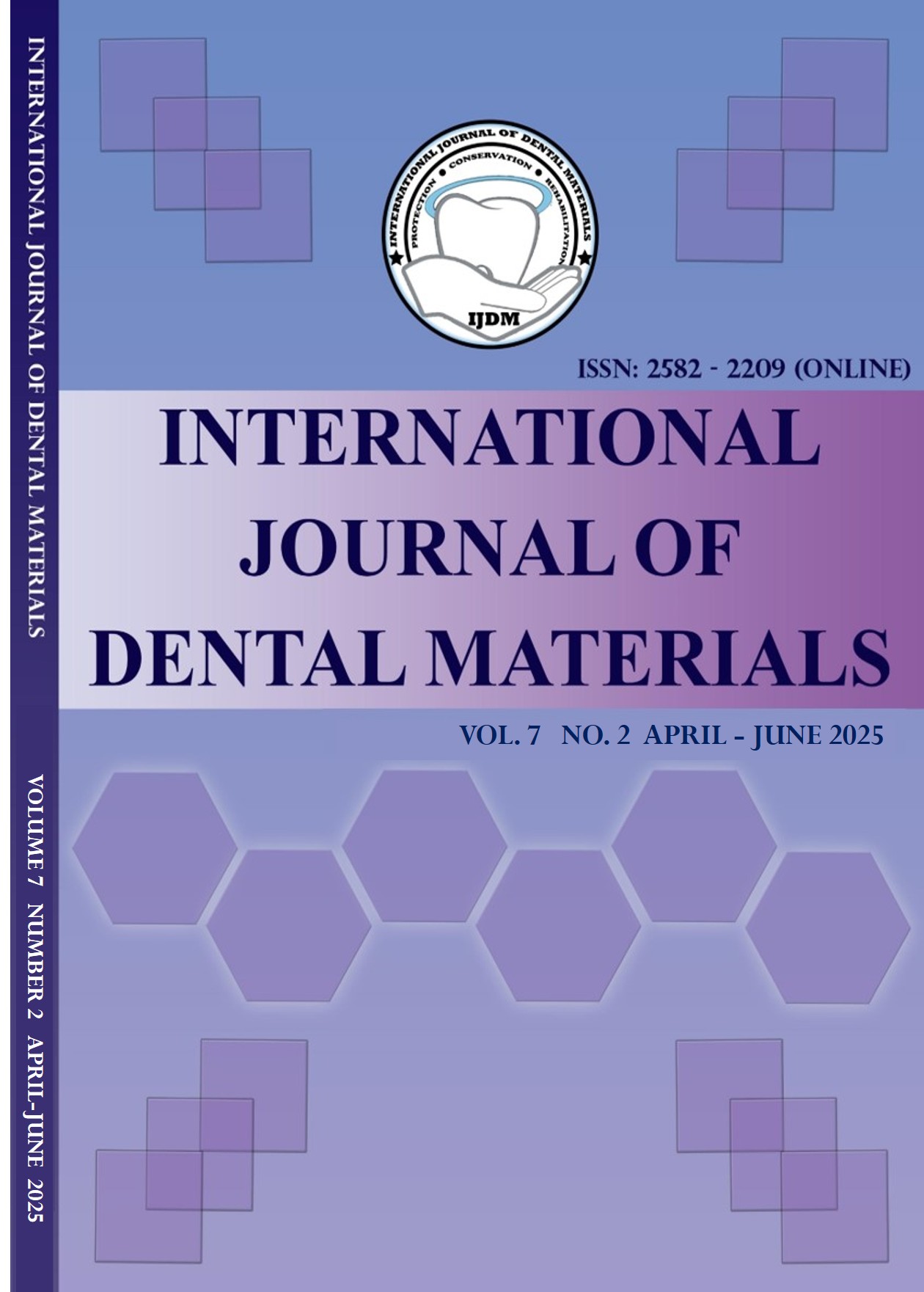Use of Artificial Intelligence for Caries Detection on Dental Radiographs
Main Article Content
Abstract
Background: Dental caries, being among the most frequent oral issues, calls for careful attention. Early checks help. Without them, things can slowly get worse, sometimes before anyone even notices. Standard ways of evaluating these cases still depend heavily on clinical skill, which isn’t always consistent. Mistakes in reading the signs aren’t rare. Now, with advancements in Artificial Intelligence, the field is shifting. It’s not just about detection anymore. AI enters the scene with promise bringing shifts in how diagnosis happens, care is planned, and cases are followed. Even the utilization of the time gets changed in clinics.
Aim: To spot interproximal caries in periapical x-rays using artificial intelligence (AI). Also, to compare the efficacy of AI findings against the readings done by radiologists.
Materials and Methods: A dataset of 400 periapical images was selected, representing 900 posterior teeth with suspected interproximal caries. A convolutional neural network (CNN) was trained using labelled periapical images for caries detection.
Results: The statistical analysis confirmed that the AI-model achieves statistically significant and clinically excellent performance in interproximal caries detection (McNemar’s test (χ² = 4.447, p-value=0.035)), and with near-perfect Cohen’s Kappa = 0.916. Model accuracy stood at 95.8%, with statistical comparison to radiologists showing no significant difference (p=0.089) and particularly notable results in advanced caries cases. The accuracy of the AI model was 95.8 percent and matched with the radiologists’ findings, with a p-value of 0.089. The results were especially strong in dealing with advanced caries cases. The AUC curve reached 0.957, and with a sensitivity of 97.4 percent.
Conclusion: AI showed solid accuracy and dependable results in finding dental caries on periapical images. Its performance closely reflected as that of experienced dental professionals’.
Article Details
Section

This work is licensed under a Creative Commons Attribution 4.0 International License.
This work is licensed under a Creative Commons Attribution 4.0 International License.

